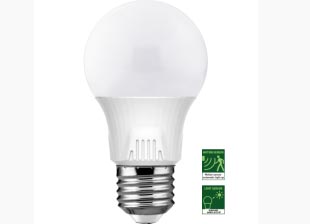
Why are LED lights better than light bulbs?
Jun 14,2024
LED lights (Light Emitting Diodes) are often considered superior to traditional incandescent or even compact fluorescent light bulbs (CFLs) for several reasons:
Energy Efficiency:
LEDs use significantly less electricity to produce the same amount of light. They are about 90% more efficient than incandescent bulbs and significantly more efficient than CFLs.
Longevity:
LED bulbs have a much longer lifespan. They can last up to 25,000 to 50,000 hours, whereas incandescent bulbs typically last around 1,000 hours and CFLs about 8,000 hours.
Durability:
LEDs emit very little heat. Incandescent bulbs release 90% of their energy as heat, and CFLs release about 80%. LEDs remain cool to the touch, reducing the risk of burns and lowering cooling costs in the home.
Environmental Impact:
LEDs do not contain mercury, unlike CFLs, which makes them safer for the environment. They are also fully recyclable.
Light Quality:
LEDs offer better quality light with improved color rendering, which means they can produce light that more closely resembles natural sunlight. This can enhance the appearance of indoor spaces and improve comfort.
Instant Lighting:
LEDs provide full brightness instantly, unlike CFLs which can take a while to warm up and reach full brightness.
Design Flexibility:
LED technology allows for innovative and versatile design options, including smart lighting systems, color-changing lights, and various shapes and sizes of bulbs and fixtures.
Safety:
LEDs operate at a lower voltage, reducing the risk of electric shock. They are also less likely to cause fires because they produce less heat.
Overall, LEDs offer significant advantages in terms of efficiency, cost savings over time, and environmental impact, making them a better choice for many lighting applications.
Prev News:How is an LED different from a light bulb?
Next News:Can I just change to LED bulbs?
Energy Efficiency:
LEDs use significantly less electricity to produce the same amount of light. They are about 90% more efficient than incandescent bulbs and significantly more efficient than CFLs.
Longevity:
LED bulbs have a much longer lifespan. They can last up to 25,000 to 50,000 hours, whereas incandescent bulbs typically last around 1,000 hours and CFLs about 8,000 hours.
Durability:
LEDs are more robust and resistant to shock, vibrations, and external impacts. This makes them more durable and less prone to breaking compared to traditional bulbs.
LEDs emit very little heat. Incandescent bulbs release 90% of their energy as heat, and CFLs release about 80%. LEDs remain cool to the touch, reducing the risk of burns and lowering cooling costs in the home.
Environmental Impact:
LEDs do not contain mercury, unlike CFLs, which makes them safer for the environment. They are also fully recyclable.
Light Quality:
LEDs offer better quality light with improved color rendering, which means they can produce light that more closely resembles natural sunlight. This can enhance the appearance of indoor spaces and improve comfort.
Instant Lighting:
LEDs provide full brightness instantly, unlike CFLs which can take a while to warm up and reach full brightness.
Design Flexibility:
LED technology allows for innovative and versatile design options, including smart lighting systems, color-changing lights, and various shapes and sizes of bulbs and fixtures.
Safety:
LEDs operate at a lower voltage, reducing the risk of electric shock. They are also less likely to cause fires because they produce less heat.
Overall, LEDs offer significant advantages in terms of efficiency, cost savings over time, and environmental impact, making them a better choice for many lighting applications.

